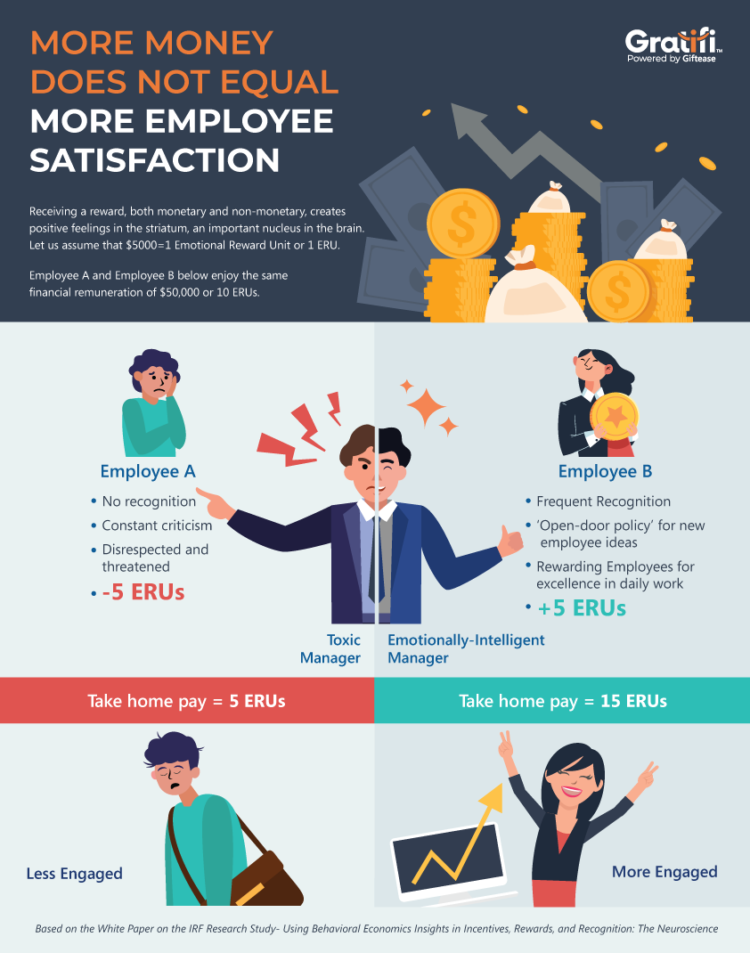1 July, 2020
Behavioral Economics: The Science Behind Rewards and Recognition
Behavioral Economics is a fascinating discipline that uses insights from psychology and neuroscience to challenge assumptions made by traditional economists about human behavior. An assumption that human beings always behave ‘rationally’, i.e., in their own best interest, has failed to explain real-life actions of individuals in general. This enhanced understanding of human beings as ‘emotional beings’ is now being extensively used by top organizations around the world to inform policy decisions, business processes and even workplace design. One of its important contributions has been developing a scientific framework for keeping employees, customers and channel partners engaged in the workplace.
Connecting with and inspiring employees to bring their best to work, to uphold company values and to drive a performance-based work culture has become the focal point of many HR heads. These objectives call for a comprehensive engagement and total rewards program, a framework that goes beyond hosting the occasional reward ceremony and kudos handout. The key to developing such an effective program is by using fundamental scientific principles to digitize the human touch. Such an approach is known to have a positive bearing on sales incentive and channel management as well. As per a study conducted by Gallup, “companies that apply the principles of behavioral economics outperform their peers by 85% in sales growth and more than 25% in gross margin.”
An example of the relevance of the field in the world of HR shines through the comparison of monetary and non-monetary appreciation in the workplace. Monetary compensation is an important motivator for an employee. Rationally, the more money you pay an employee, the happier they will be. However, monetary compensation alone does not determine the satisfaction and engagement levels of an employee, as shown in the infographic below. It cannot, for example, drive an employee to spend extra hours to help finish a project requirement or share the workload of a teammate. Such commitment requires a strong sense of belonging towards both the team and the organization, which can only come through emotional allegiance. Maximization of emotional reward units (ERU’s) to boost retention rates can only happen through effective employee engagement and continuous appreciation.

In our next few blogs, we will delve into more applications of behavioral economics principles used while structuring certain HR processes. Stay tuned for more!